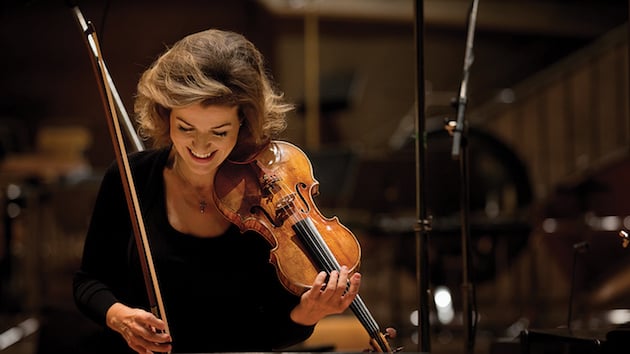
On Sunday evening at Davies Hall, violinist Anne-Sophie Mutter and her long-time collaborator, pianist Lambert Orkis, performed sonatas by Mozart and a trio of French composers, Debussy, Ravel, and Poulenc. Mutter and Orkis conjured a world of sunshine and beauty that permeated the entire concert. Much of this was due to the duo’s interpretations of the 20th-century French works; however, the sheer gorgeousness of sound that Mutter coaxes from her instrument should not be discounted. While more angst might have been in order, I enjoyed the sunshine.

Mozart’s Sonata in B-flat Major K. 454 is a mature work in which the violin and piano are on equal ground, in contrast to earlier sonatas where the piano is the dominant instrument. The opening Allegro intersperses pulsating motion with passages of ease and charm, and Mutter’s higher-register melodies soared with her trademark lyricism and sweet tone. Orkis played with a sparkling sound, and convincingly accentuated Mozart’s harmonic surprises. The genial mood was present even in the G-minor sections. The Andante, which features one of Mozart’s most memorable melodies, was poignant and expansive.
Debussy’s sonata for violin and piano was his last composition. Written during World War I while the composer was battling late-stage cancer, the piece has elements of both light and darkness. As was the case this evening, the light won out. The opening piano chords of the first movement usher in a subdued, sensual atmosphere. Mutter and Orkis’s interpretation embraced this sensuality, while maintaining and even emphasizing the rhythmic thrust and momentum of the more animated passages. However, the music’s melancholy and wistful nostalgia was downplayed. The violin is the star of the show in this movement, and Mutter’s vibrato and glissandos were exquisite. Orkis played the chordal and arpeggiated accompaniment with a rich sound, while maintaining the piano’s supportive role. His trills were superb. The coy and impulsive nature of the second movement Intermède, in which the instruments are on a more equal footing, was communicated effectively, as were the motion and intensity of the finale, marked Très animé.

The polytonality and dissonances of Ravel’s second violin sonata, a neoclassical work like the Debussy sonata, imbue the work with an uneasy, foreboding quality, its lyrical episodes notwithstanding. In Mutter and Orkis’s reading, the piece had a more pleasing and relaxed character and, remarkably, its harmonies did not sound very far removed from the music Ravel composed 20 years earlier. While some interpretations bring out the sardonic and nervous character of the central Blues movement, as well as the aggression of the concluding Perpetuum mobile, that was not the case in this performance, and, to be fair, in many other performances of this work.
Poulenc did not like the violin “in the singular,” but overcame his resistance to composing a violin sonata after studying Brahms’s violin sonatas. Perhaps his dislike of the violin accounts for the frequent prominence of the piano and the supporting role of the violin, which provides accompaniment in many places via pizzicato and arpeggio. The sonata opens with a theme that wavers between minor and major, and throughout the first movement the music has a feeling of pressing forward.

Mutter and Orkis latched on to the music’s lyricism, but there could have been more excitement and urgency (the movement is marked Allegro con fuoco). The second movement Intermezzo features a piano accompaniment of repeated chords of stacked fourths that mirror the open strings of a guitar. The music is beguiling, and it was played lovingly. The final movement, marked Presto tragico, is full of drama, and, in contrast to the duo’s reading of the first movement, the drama was fully present. The movement ends with a slow coda, in which a series of chords are separated by long pauses. The audience applauded prematurely, but fortunately this did not detract from the impact of the piece and the conclusion of the concert.




